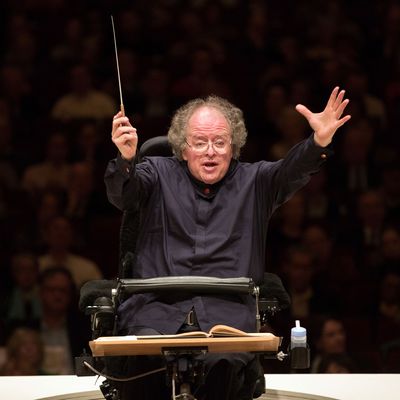
On Sunday afternoon, when James Levine returned to conducting after two years on the disabled list, I stretched out on a bed 150 miles from Carnegie Hall, slipped on a pair of headphones, pointed my iPhone to the Metropolitan Opera website, and took my virtual aisle seat. I couldn’t see Levine steer his motorized chair in front of the Met Orchestra, which he has built and rebuilt over nearly 40 years. I knew he had to be elevated onto the Carnegie podium by a special lift and that, later, he took his bows from a seated position. But without those visual cues, what I heard was a man who remained weightless and agile in music’s malleable atmosphere.
Luciano Pavarotti, another musician with mobility issues, often referred to himself as an athlete, because singing is such a profoundly physical act. So is leading an orchestra: Thousands of decisions and desires pass through the face and arms and body of the conductor, and into the movements of each musician. Despite his impairments, the channel between Levine and his orchestra remains spectacularly intact. On Sunday, the prelude to Lohengrin planed in a languorous updraft. In Beethoven’s Fourth Piano Concerto, the orchestra swiveled and swooped like a flock of starlings around Evgeny Kissin’s piano. But it was the concert’s second half, Schubert’s “Great” C Major Symphony, that brought home to me just how much I’ve been missing the muscular rumble of the Met orchestra when Levine is in the pit.
There’s a recurring spot in the first movement of that symphony, when the strings scud along a jet stream in sprightly eighth notes while, thousands of feet below, low brass slowly gather their forces. The growl intensifies, the fanfare tightens, the volume grows, and soon the trombones have achieved liftoff, rising toward the sun in a stately blaze. Levine turned that passage into a phenomenally operatic moment in a wordless symphony, containing the crescendo until he was ready to let it roar. I can’t imagine what agonies and accommodations he has had to master in order to make his comeback, but on Sunday, his struggles with gravity fell away, and the sounds that his orchestra made in the hall rushed around with a ferocious, exuberant grace.


